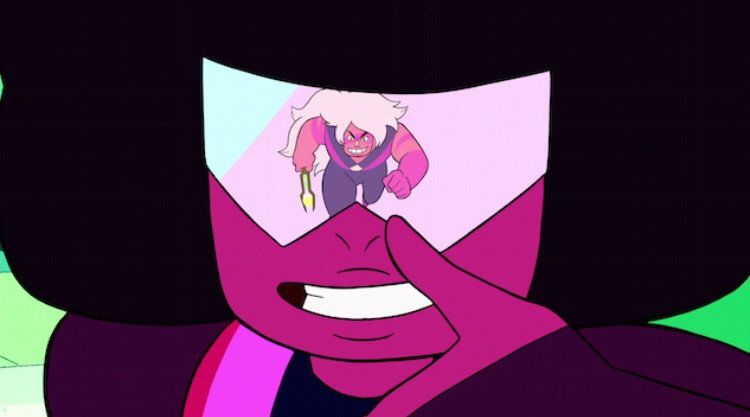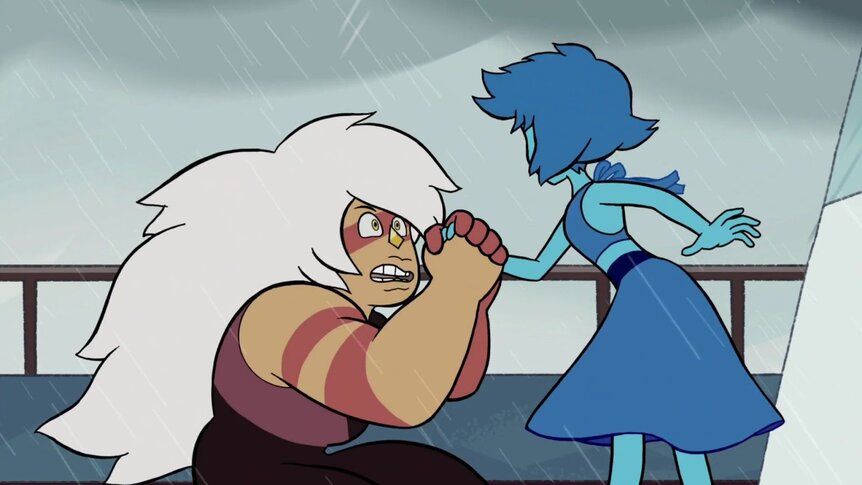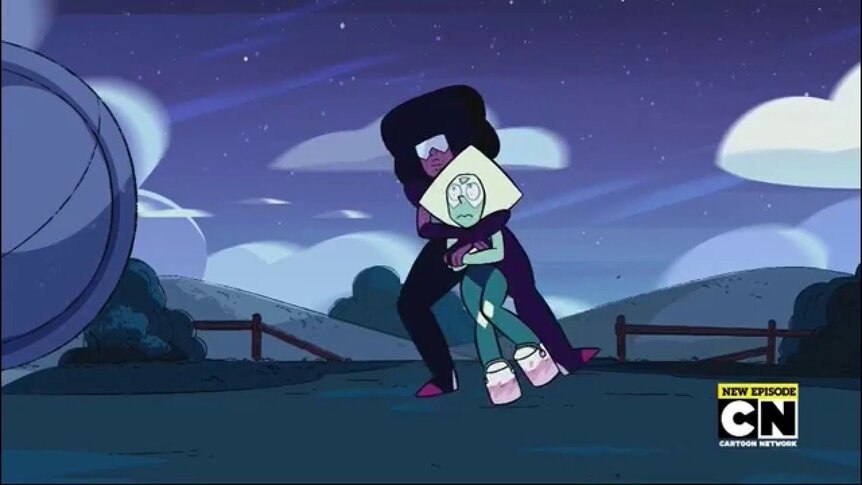Create a free profile to get unlimited access to exclusive videos, sweepstakes, and more!
Steven Universe and the importance of consent

When it comes to TV designed for children, Cartoon Network's Steven Universe is one of the most progressive, thoughtful, and generally important shows being made today. Following the story of a young boy with the power to protect and heal, the show frequently introduces children to complex emotional topics in easy-to-understand ways.
One of the most impressive topics that Steven Universe as a show regularly tackles is the concept of consent and the role it plays in interpersonal relationships, from the good to the bad.
A little background on the show: in Steven Universe, there are a species of sentient alien rock women called gems, who are all named after various precious stones or minerals and have varying strengths and weaknesses. When two gems are in perfect sync, and properly aligned with each other, they are able to fuse and become a totally new being together, which is frequently used in the show as a stand-in for telling stories about various kinds of intimate relationships. Sometimes it's love between friends, sometimes it's romantic love, and sometimes it's used as a child-friendly stand-in for sexual interactions, an act considered the height of trust-based intimacy between two people.
One of the first really impactful examples of a consent discussion in Steven Universe revolves around the character of Garnet, who is a permanent fusion of two other gems. For Garnet, fusion is an act of love and support, so much so that the two gems who fuse to form her eventually get married to each other in a beautiful gay beach wedding. Fusion is intimate and not to be undertaken without proper trust.
In the episode "Cry for Help," we see Garnet routinely fusing with her fellow Gem Pearl out of necessity. A dangerous communication tower keeps being rebuilt, and the pair is larger and more able to fix the problem when fused as Sardonyx, so they fuse time and time again to keep destroying the tower.
The problem is, Pearl has actually been repairing the tower herself, creating an excuse to fuse with Garnet under false pretenses, because it makes her feel more powerful.
What Steven Universe handles really well about this story about a violation of consent is how much it pays attention to the complex aftermath of Pearl's actions. Garnet is first angry, then just silently ignores Pearl entirely. Garnet's rational and results-focused half Sapphire wants to just pretend it never happened and get past it, while her emotional and short-term-focused side Ruby wants to be mad and angry and upset. Garnet ends up at war with herself, unsure how to handle her conflicting feelings about how best to recover from the fact that someone abused their trust and consent in that way. It's a heavy plotline spanning multiple episodes, and the pair is never quite the same again after that betrayal of trust. The weight of ignored consent is really hammered home.
Another really important example of the show tackling consent is the abusive relationship demonstrated between the characters Lapis and Jasper. Jasper holds Lapis hostage as part of a plan to destroy the earth. After Jasper sees how powerful Garnet is as a fusion, Jasper forces her captive Lapis to fuse without her consent. Lapis uses this opportunity to chain Jasper to the bottom of the ocean, dragging herself down with her. She thinks that if she can just endure Jasper's attacks, keep her away from the rest of the world, and shoulder that burden herself she can limit the harm Jasper does. Lapis stays in an abusive unwanted fusion in order to protect others from an abuser.
When this fusion eventually falls apart, and Lapis gets away from Jasper, she is left dealing with complex emotions about her abuser. She felt powerful while fused with Jasper, not an unpleasant sensation, and she worries that maybe that means she actually liked the whole relationship and maybe it wasn't forced on her after all. This isn't helped when Jasper resurfaces, promising to have changed, begging to be taken back. Jasper gaslights Lapis, suggesting she is broken and evil and unlovable, and uses that to try to bring Lapis back into the fusion.
Lapis eventually stands her ground, telling Jasper she doesn't want to be with her and breaking free of the cycle of abuse she was almost drawn back into. It's one of the most beautifully rich depictions of an abusive relationship I know of, and it really delves deep into how complicated it can be when you have positive feelings tied up with the negativity of an abusive relationship.
Lastly, it's important to also mention the character of Peridot, one of the few gems on the show who has never fused with another character.
Peridot is a bit of a fish out of water on Earth, not long departed from a class system where different types of gems fusing was a huge taboo. When faced with our main cast of characters fusing with each other freely and without shame, she has a lot of trouble understanding some of what fusion is about. She can understand why some gems fuse to become bigger and stronger for specific tasks, but she can't understand Garnet, who is just constantly a fusion of two people, experiencing things together.
Garnet offers to help her understand fusion and what it feels like by offering to fuse with Peridot, something she's taken aback by. She seems unsure, then decides impulsively to give it a go. After fumbling around in the beginnings of a fusion dance, Peridot panics and backs out, saying that she doesn't feel ready. Garnet explains that's totally OK, and puts no more pressure on her.
This scene is important, as it helps explain why Peridot is one of the few characters on the show who the creators have not rushed to fuse with another character. She's just not ready for that, and respecting her choice not to fuse is important. It's why we've seen countless examples of times where Peridot and Lapis are both able to help save our heroes in a series finale or movie, where it would be easy to have them fuse to solve the problem and get a big cheer from the audience, but they simply don't. Peridot isn't ready to fuse, Lapis had an abusive relationship involving fusion, and as a pair, they don't need to fuse to work together and be close.
Considering fusion is used as such a wide-ranging consent metaphor, Steven Universe manages to tell a wide variety of stories that touch on real difficult adult topics, but in ways digestible for younger audiences. More shows that impart lessons about proper consent is never a bad thing, and Steven Universe seems to almost make it a mission to ensure that the lesson is taught to its audience.
The views and opinions expressed in this article are the author's, and do not necessarily reflect those of SYFY WIRE, SYFY, or NBC Universal.





























